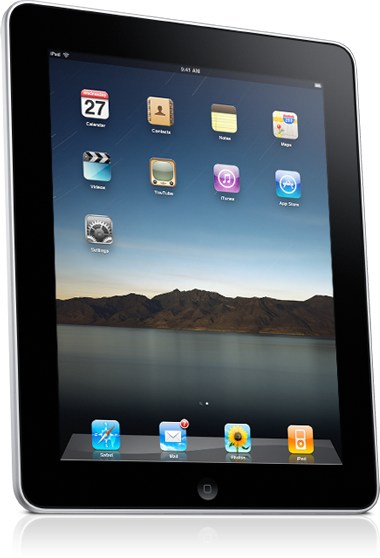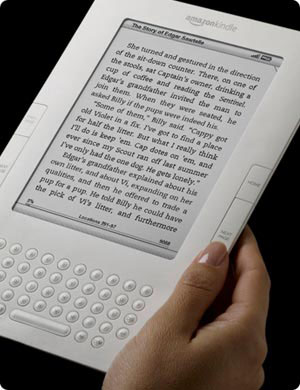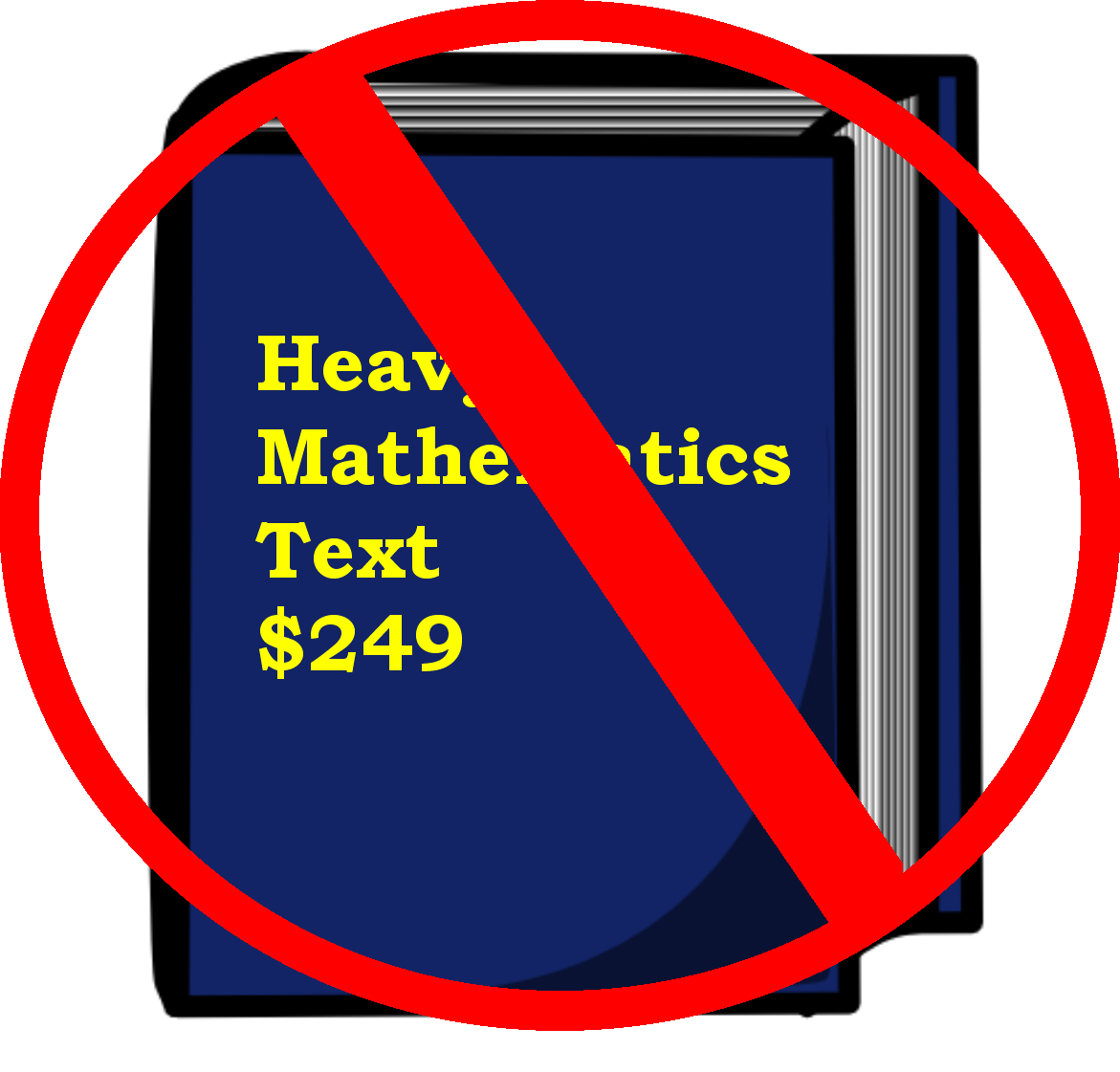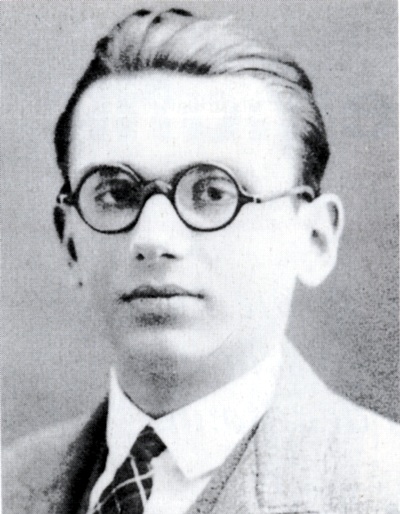What I wish, in relation to textbooks (first, get rid of the publishers)
Posted by: Gary Ernest Davis on: February 13, 2011
I have just been watching, for the 4th or 5th time, the Bloomberg Channel’s Game Changers story of Steve Jobs.
The thing that got me thinking again about the very high price of student text books was Steve’s implementation of i-Tunes: 99¢ a tune, or forget it.
Steve Jobs and Apple had both the hardware – the iPod – and the software – iTunes – to pull this off.
Here’s what I wish for student textbooks (and I am talking particularly mathematics texts, which I know most about, but the same seems to apply to all fields of study):
1. Textbooks are free to students, or very inexpensive: maybe 99¢ a chapter.
This would, for example, bring Stewart’s Calculus, a book of 18 chapters with a list price of $224.95 , down to $17.82.
And because Calculus I students do not need the entire book in the first semester of calculus, they would pay only something like $6 for the first semester. If they continued to Calculus 2 and 3 they would pay another $6 in each of the following two semesters.
2. Textbooks have ads targeted at, and useful to, the students who are using the texts.
On what sort of things are school kids and college kids going to spend their money?
Uhm, let’s see: phones, clothes, music, computers, video players, CDs, DVDs, calculators, ….
If you’re over 25 years old you will probably see this as grubby commercialism. The 18-22 year-olds I have surveyed – informally – think this idea is GREAT: “Are you kidding?” they ask. “A really cheap textbook that gives us ads for things we want? That’s great!”
So get over it: kids will happily accept ads, especially for things they are interested in, over having to pay more than $200 × 4 = $800 each semester on books they don’t read, or – worse – not buying the books at all because they are too expensive.
3. Textbooks are e-books, readable on iPads and Kindle.
 There’s a couple of reasons for this.
There’s a couple of reasons for this.
First, one small, lightweight, device, can hold all those heavy textbooks.
Sure an iPad might cost $420. But that’s less than what students, or their parents, are expected to pay for just 2 paper textbooks.
Oh, yeah, and with an iPad you can surf the Web and send and receive email, and here’s all them there app thingies, where you can check stuff and order pizza.
It’s not rocket science folks.
Second, on an iPad – and maybe even a Kindle – we can have Google Ads, or Amazon ads. or ….? 
These are ads targeted to the readers and the subject matter.
4. The content authors – the dudes who write the content – get paid from the advertisers.
The more popular and useful their content, the more dollars they pull in from the advertisers.
Just like what happens now, except that the publishers, distributors, booksellers, and printers are not making fistfuls of dollars from the sales of texts.
Maybe there’s some snappy designers in the mix who make a buck.
5. The winners have to be students, and their parents (= bankrollers).
They will pay much less for the same high quality product – maybe even better quality because nothing would stop content providers – the authors – and their design partners – inserting videos directly into e-texts.
6. I want to know how we can make this happen.
We can begin with one content area (I would start with mathematics, surprise!)
We need some authors, willing to take a chance; some designers willing to do the same; some technical guys to get the content onto the devices; and some marketing people who know about Google Ads, Amazon ads, and other e-based advertising.
Then we need to target a particular market – say calculus – and figure out how to get students and their parents, to INSIST that their teachers adopt these sexy, cheaper e-texts.
If Egyptian people can get rid of a dictator, students can reform recalcitrant professors and teachers.
How can we do this?
Who’s willing to give it a shot?
Mathematics and art: Test based versus project based assessment
Posted by: Gary Ernest Davis on: February 12, 2011
The following post was written by Michel Paul (edited – mainly links and images – by Gary Davis)
_____________________________________________________________________________________
Something that has occurred to me regarding test based assessment vs. project based – our test based approach tends to emphasize ‘math and science’ rather than ‘math and art‘.
However, math has just as much to do with art, music, and philosophy as it does with science and technology.
That’s why I believe programming should become a standard part of the math curriculum.
Programming is putting one’s thoughts into language.
Its significance for education goes way beyond simply using the computer as a tool. When we program we are saying something, we are making assertions and describing procedures, patterns, and the properties of objects. We are organizing our ideas.
The mathematical objects we can describe through programming occur in both science and art. Fractals are a great example.
We so often say to students that ‘math is a language‘, but we really don’t teach it that way. Instead, what we teach is a kind of stimulus/response to problem types. We tend to emphasize “When you see this, do that,” and that is how students learn to think. They usually ask “What are we supposed to do?” rather than “What does this mean?”
I think the typical way in which technology is used in math classes only reinforces this behavior, and it tends to separate the math and the technology. We have the math ‘here’ on our paper and the technology over ‘there’ in a calculator or an app, and on those occasions when we need it, we will reach for the device to help us do the math. However, when you create a project using GeoGebra or Python or even just a spreadsheet, you are creating a document. The math and the technology become one. And this is especially true in programming.
I like to say that fractions are objects, not unfinished division problems. A fraction is a two-part data structure. It is a tuple. Reasoning about how the parts of a fraction maintain their integrity as they interact with other fractions is simultaneously mathematically and technologically educational.
I have experienced this separation of math and technology as one of the main obstacles to the proposal of integrating programming into the curriculum.
The response to such a suggestion has typically been that we already have calculators to help us do the math, so why do we need to add programming as an ‘extra layer’?
I see it in reverse. I see the activity of programming as math itself, especially when considering the perspective of Church and Turing‘s work.
This is significant. I think math students should hear these names. I think it is utterly amazing that high school kids never hear of Gödel, but his work in math was just as important as Einstein’s in physics. Imagine if our science students never heard of Einstein!
In math we tend to measure trained responses to problem types rather than depth of creative/reflective thought. Of course – how do you measure depth of creative/reflective thought? And that was my initial question. : ) It’s what I’d like to find out.
Regarding testing, as I can’t just do away with it, something I have recently been doing a lot of is justified true/false.
I tell the students that if you’re going to assert that something is true or false, you should also be able to say why. That’s very important in mathematics.
I tell the kids that they can justify their responses in all kinds of ways. They can draw a picture or use algebra or written prose, but in some way they need to be able to say why they think what they think.
In a way I see this as similar to creating a project. And if they really don’t know, they should be able to say so. I have found it fascinating. I have occasionally seen students beautifully justify the exact opposite of what they’ve asserted! An example of such a problem:
True/False:Â Since the digits of pi ‘go on forever’, pi does not have an exact location on the real number line.



